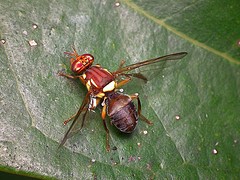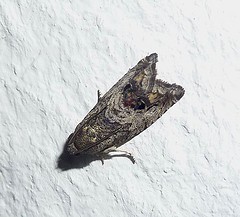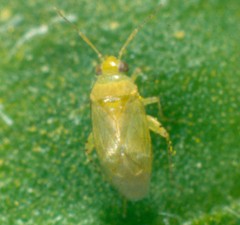3 Bugs to Look Out For That Could Destroy Your Fruit Crops
If you’re a farmer with massive fruit crops or even if you’re an avid fruit grower in your own home, then you know that summer is a popular growing period for many fruits and other crops.
But with fruit and crop growth in the summer comes the issue of bugs and outright fruit pests that can impact on agricultural production, which could very well be your main source of if you’re a fruit farmer.
In today’s blog we’ve listed three notable bugs that you should keep an eye out for, whether you’re involved in the agricultural industry or grow fruit at home.
Queensland fruit fly

When looking at fruit flies on a global scale, the term “common fruit fly” typically refers to a family of flies that aren’t considered pests and do not destroy fruits or crops. However, the Queensland fruit fly can be very detrimental the economic well-being of fruit and crop production.
As the name suggests, the Queensland fruit fly is rampant in Queensland – particularly in east and south east Queensland. However, the fruit fly does also reside in northern New South Wales. In general, the notable issue with the Queensland fruit fly is that is notorious for destroying fruit and other crops, especially before harvesting.
As a pest, it is considered a serious threat to agriculture in Queensland and NSW, and farmers that grow crops – be it fruits or other crops such as wheat and sugar cane – are advised to take as many preventative measures against to stop this pest.
Codling moth

The codling moth is another notable threat to a number of different fruits and crops in the agricultural sector, but is more widespread than the Queensland fruit fly. The codling moth can be found in NSW, Victoria, Queensland, South Australia and Tasmania.
Their target crops of choice include pear, apple, quince and walnuts. They damage such crops by burrowing deep inside them, essentially causing irreparable holes or funnels. They will usually target such crops from bloom to harvest.
Traps can be bought to capture these moths, with a popular trap being the codling moth diamond trap, which is lined with a non-drying glue that catches them and makes it near impossible for them to escape. A lure/bait is attached to the trap to attract the moths.
Apple dimpling bug

Apple dimpling bugs are native to Australia and typically will be greenish brown in appearance and are normally no more than 3mm in length. They are a very small bug, but they cause notable damage because they enjoy feeding on flowering plants and immature fruitlets.
Because of this feeding, when the plant expands it suffers from scarring a dimpled effect. For example, an apple may grow out to be bruised and have dispersed small dents over the surface of its skin.
While the apple dimpling bug isn’t often classified as an outright pest, they can impact on crop quality if not managed. Any apple (or other fruits/plants that dimpling bugs feed upon – e.g. pears) with extensive dimples and bruising simply cannot be sold for commercial sale, which makes it essential to check for apple dimpling bugs.
If your crops have ever fallen victim to any of these three bugs, we’d like to hear how it impacted on crop production and how you got rid of them.
* Image sources: